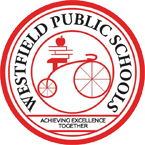Students across western Mass. are wrapping up what was, for most, the first full year of in-person learning since 2019.
But not without many challenges along the way.
“We needed students in person,” said Holyoke Public Schools’ superintendent, Anthony Soto.
This year, school districts across the Bay State, including in western Mass., opened their classroom doors once again for students and staff to return for the first time since before the COVID-19 pandemic.
In the spring of 2020, schools shut down entirely, adopting a remote learning model before shifting to hybrid learning for the 2021 school year and eventually returning to in-person learning full-time in 2022.
There were some big hurdles along the way, with the median growth for students finally on track.
“From 2019 to 2020, the first year of the pandemic student growth was measured at 61 percent. From 2020 to 2021, that growth was at 78 percent and then this year while we are fully in school, the growth is at 100 percent,” explained Stefan Czaporowski, superintendent of Westfield Public Schools.
The cities of Westfield and Holyoke highlighted gaps in student achievement seen over the past three years as students work to catch up not only on an academic level but a social-emotional one as well.
“Socially and emotionally, students definitely were impacted for the time that they were away,” explained Soto.
“Mental health directly impacts academic achievement,” said Czaporowski.
Both districts received elementary and secondary school emergency relief funds, or ESSER, which is money from the federal government allocated to helping schools recover from the pandemic. Czaporowski told Western Mass News that funding has been crucial in working to get students back on track.
“We added eight school adjustment counselors through the ESSER grant funding to help support our schools and our students, but we are still seeing particularly with the staffing shortages throughout the country we are still seeing that students trying to find or see a counselor or waiting six, eight, 10 months now,” said Czaporowski.
After observing students in classrooms from Pre-k to 12, over the past three school years, both superintendents noticed a trend in which grade level needs more assistance.
“Without a doubt second grade. These were kids that in most cases were coming to the school for the first time. But that second graders having missed Pre-K in kindergarten in large portion of first grade, so we are expecting them to be second graders into second-grade level work when they have missed a lot of the foundation that you get in Pre-K and K,” said Soto.
“But K, kindergarten grades one and two. Think about it makes perfect sense. Students that were in kindergarten in 2020 lost at least 1/3 of the school year in-person learning,” explained Christopher Rogers, student intervention and safety administrator of Westfield Public Schools.
Rogers told Western Mass News that math and literacy are the two subjects requiring the most attention. However, improvements are already beginning on the literacy front.
“This year now that they have been in person, we have seen nearly 30 percent growth from fall to post-testing in the spring and that median growth is 100 percent...Mathematics has been our biggest challenge. We have a plan to address that for next year,” Rogers said.
That plan includes increasing the number of interventionists in Westfield schools from three to 10. These interventionists work directly with students identified as needing additional help.
“We have been able to add academic intervention teachers in every school,” explained Soto.
“Unfortunately, I do not believe that this problem is magically going to disappear by the September 2024. In fact, I projected that we are going to feel the effects of this for at least a decade,” explained Czaporowski.
“We have all these great resources now and something happened during a pandemic where people are just leaving education and going to other fields,” said Soto.
As inflation continues to be an issue in the United States, both Soto and Czaporowski feared how students and their families will be impacted during the upcoming school year. 50 percent of Westfield Public Schools’ students are considered low-income. In Holyoke, that number is over 80 percent.

